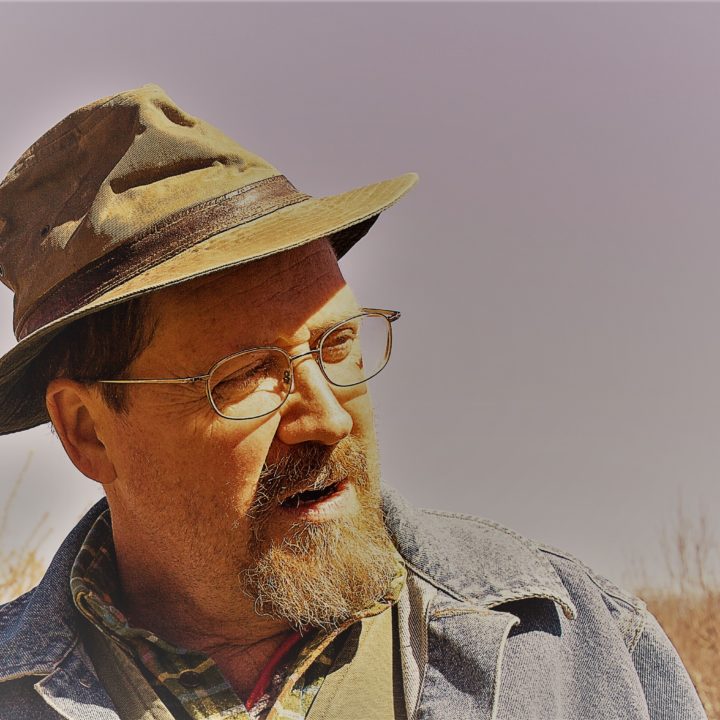The initial thrill that comes with an ice storm and a loss of power faded a bit the morning the temperature bottomed out at 3 degrees. Delores the sow had dragged the heater out of her water trough for the fifth time, the pond ice for the cattle and horse had to be broken every few hours, and a young ewe and her newborn had to be rescued after lambing in a far corner of the wind-blown sheep pasture and relocated to the shelter of a barn stall. Still, the domestic pleasure of coming into a cozy house heated by a woodstove to sip a hot cup of tea is not to be dismissed.
Traditionally we built our houses to meet the demands of our climates, a grass hut if you lived on a tropical isle or a house with connected barn if you lived in New England. Older houses in Louisiana, when I was growing up, were typically built a couple of feet off the ground. It was a good model for a warm climate. The open space underneath kept the house cooler in the warmer months (most of the year), and the elevation protected against the occasional flooding. Freezes, like the big one in 1940 my dad recalled, were rare. And given that most plumbing was limited to the kitchen, freeze damage to the house was minimal.
Infrastructure was on my mind this past week here in East Tennessee. After a week of temperatures barely budging above freezing, we had an ice storm. The storm caused our farm to lose power. Then the temperatures plummeted to low single digits. Thankfully, we had a generator to run the refrigerator, well pump and a few essential electrical circuits. A Jotul woodstove helped keep the house a comfortable 60 degrees. Another generator at the barn kept a variety of water tanks heated for the sheep, chickens, goose, cattle and horse.
Today, our houses are designed to accommodate the additional “essentials” that just a generation ago were not needed nor even available. The electricity to keep the modern house functioning is a relatively new concept in human culture. The boundary line of what is essential has shifted. Shelter, heat, food and water now share demand with internet, smartphone, cable TV and microwave.
Older forms of infrastructure had built-in resilience: barns carefully constructed to hold heat, with hay mows above to ease the feeding of livestock in poor weather; deep in-ground cisterns to provide fresh water for the farm; houses designed to facilitate warmth in the winter or coolness in the summer—smart, low-tech designs that we have pushed aside with the assumption that the power grid will now take care of us.
Over the years Cindy and I have discussed converting our farm to an off-the-grid power system. Each time, though, we found the costs to be prohibitive. But this week, after a few days without power, as we scrambled to keep up with our needs, it occurred to me: off-the-grid is easy; it is our modern needs that are complicated, the prohibitive factor, the stumbling block, the real expense.
Those old houses in south Louisiana worked year in, year out because they had very little modern infrastructure to protect. Working under the house insulating each individual pipe before the ice storm, I was overwhelmed by how much plumbing is needed in our small house just to furnish us water on demand. Hot and cold pipes to the kitchen and the two bathrooms, the hot water heater and the washer/dryer—a complexity of plumbing requiring protection from the elements, so that it might protect us from the elements.
Driving into town late in the week, I saw dozens of downed trees, limbs still balancing on utility lines, brush pushed to the edges of the road. As I looked at the miles of power lines and telephone lines, our true vulnerability was evident. It was not the loss of electrical power that we feared but the loss of a certain status that comes with our modern life, a status of predictability.
Off-the-grid literature is typically geared towards finding ways around the commercial power source, yet retaining the modern conveniences. As we watered and fed our sheep, as lambs were born this week without regard to the temperature or the state of our utilities, I thought about the Amish. While many of us were without power, were they concerned with an inability to update their Facebook pages, charge their cell phones, keep their freezers going, stay warm with their electric furnaces? Did they feel powerless? Somehow I doubt it.
The complexity of this modern life, the infrastructure that maintains it, is hardwired for disruption. Our system and our expectations for what it must provide are such that losing power is a form of powerlessness. That in itself seems a form of slavery. Which is why there is, for me, always that bit of anarchic joy in an emergency, an unshackling from the system. Though that uncertain joy is accompanied by relief when the master comes home and power is restored.







